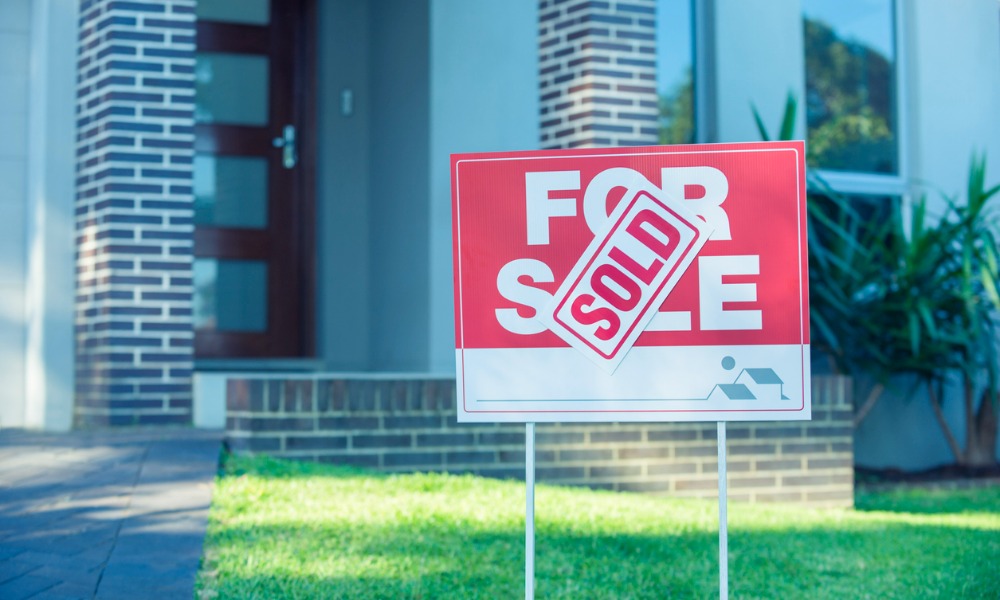Home buyers flooded the market for one specific reason

Could home sales be making a comeback? After four consecutive monthly declines on rising mortgage rates and affordability erosion, home sales rose in May – but that may have just been an anomaly driven by savvy buyers.
Newly released data from the US Department of Housing and Urban Development and the US Census Bureau showed new homes sales posted a solid gain in May after some buyers flooded the market ahead of the June interest rate hike by the Federal Reserve. The upshot: sales of newly built, single-family homes in May rose by 10.7% to a 696,000 seasonally adjusted annual rate from an upwardly revised reading in April.
Still, new home sales are down 10.6% in 2022 on a year-to-year basis. And the National Association of Home Builders expects sales to decline in the wake of the Fed’s move to cool the economy and ease inflation. “High construction costs and rising mortgage rates are pricing many buyers out of the market,” NAHB chairman Jerry Konter said in a prepared statement. He offered more sobering thoughts: “Only 10% of new homes were priced below $300,000 in May, compared to 23% a year ago.”
Read more: Lumber industry reps plead for tariffs relief – reaction
NAHB’s chief economist, Robert Dietz, added a further slap of reality: “While sales were up in May, the 696,000 pace was 5.9% lower than a year ago and new home sales on a year-to-date basis are down 10.6% thus far in 2022. Moreover, the month’s supply measure is elevated at 7.7, but existing home inventory remains very tight, and this supports demand for new construction.”
But there’s May at least, offering a glimpse of good news. First American economist Ksenia Potapov offered insights into what may be nothing more than an aberration as people acted ahead of the last rate hike.
“US pending-home sales beat consensus expectations, increasing 0.7% month over month and ending a six-month streak of declines,” she told MPA. “Pending-home sales are a forward-looking indicator of home sales based on contract signings. Pending-home sales are only down 5% compared with the same time in 2019, despite significantly higher mortgage rates.”
Declining affordability continues to weigh on home buyers, but demographic headwinds will continue to drive demand, Potapov added.
“The bigger problem may be the ongoing lack of housing supply,” she said. “Existing homes make up approximately 90% of inventory, but existing homeowners are staying put. Average tenure length in the US is over 10.5 years. Fewer existing homeowners selling means fewer homes for sale and, ultimately, fewer sales.”
As mortgage rates rise, existing homeowners find themselves locked in “golden handcuffs,” Potapov added: “They have little financial incentive to sell their home only to buy a new one at a much higher mortgage rate. This is the rate lock-in effect.”
Read next: Housing construction – huge impact from critical worker shortage
In the coming months, Potapov added, potential home buyers will be sensitive to large swings in mortgage rates. Then, another glimmer of hope: “The general direction is toward housing market normalization.”
According to the NAHB, a new home sale occurs when a sales contract is signed or a deposit is accepted. The home can be in any stage of construction: not yet started, under construction or completed. In addition to adjusting for seasonal effects, the May reading of 696,000 units is the number of homes that would sell if this pace continued for the next 12 months.
To be sure, new single-family home inventory remained elevated at 7.7 months’ supply, up 42.6% over last year, with 444,000 available for sale. However, only 8.3% of new home inventory is completed and ready to occupy, the new data showed. The remaining have not started construction (25.9%) or are currently under construction.
But the median sales price dipped – although nominally – to $449,000 in May from $454,700 in April. But that’s still up 15% compared to a year ago, due primarily to higher construction and development costs, including materials.
Regionally, on a year-to-date basis, new home sales fell in all four regions, down 3.8% in the Northeast, 21.7% in the Midwest, 12.3% in the South and 2.2% in the West.



